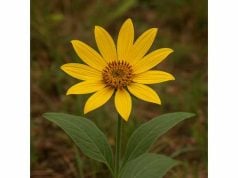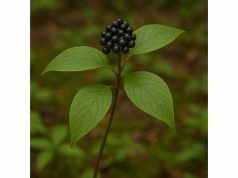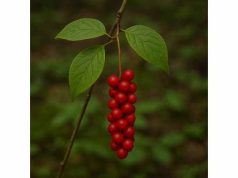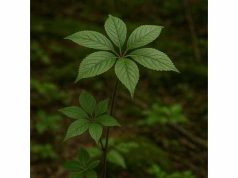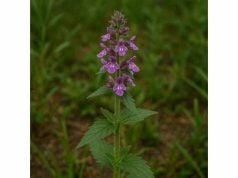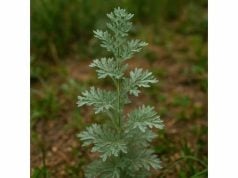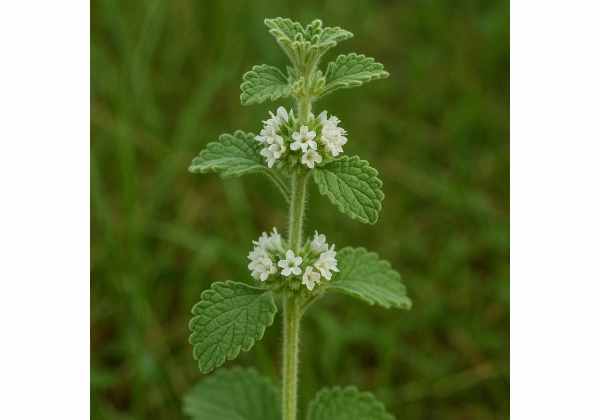
White horehound is a classic medicinal herb revered for centuries, cherished for its powerful health benefits, remarkable active compounds, and diverse medicinal properties. Traditionally, it has been recognized as a go-to remedy for respiratory concerns—such as coughs and bronchitis—while also offering support for digestion and immune balance. White horehound’s beneficial compounds, including marrubiin, volatile oils, and flavonoids, underpin its reputation for soothing coughs, clearing phlegm, and enhancing overall well-being. From herbal teas to tinctures and natural lozenges, its uses are as varied as its time-honored benefits, making it a staple in natural wellness practices.
Table of Contents
- Botanical Characteristics and Identification Guide
- Active Constituents and Phytochemical Analysis
- Core Health Advantages and Medicinal Properties
- Practical Uses, Dosage, and Safety Precautions
- Key Research Findings and Scientific Insights
- FAQ
Botanical Characteristics and Identification Guide
White horehound (Marrubium vulgare) stands out among medicinal herbs for its woolly texture, square stems, and resilience in arid conditions. A member of the mint family (Lamiaceae), it is native to Europe, North Africa, and parts of Asia but now flourishes in temperate regions around the world. This perennial herb can reach up to 60 cm in height and is easily recognized by its distinctive appearance and hardy nature.
Physical Features:
- Leaves: Pale green, wrinkled, and covered with fine white hairs, giving them a silvery or grayish appearance. The leaves are oval to oblong with deeply toothed edges.
- Stems: Square, branching, and densely woolly.
- Flowers: Small, white, tubular flowers grow in dense whorls at the leaf axils, blooming from late spring through summer.
- Aroma: Emits a strong, slightly bitter scent—unmistakably herbal and pungent.
Growth Conditions:
- Soil: Prefers poor to moderately fertile, well-drained soils, often thriving where other plants struggle.
- Sunlight: Requires full sun for robust growth.
- Water: Drought-tolerant once established but benefits from occasional watering in prolonged dry spells.
Natural Habitat:
- Commonly found in open fields, roadsides, rocky slopes, and disturbed areas.
- Its resilience and adaptability have made it a familiar sight in both cultivated herb gardens and wild landscapes.
Distinguishing White Horehound:
- Woolly, felt-like texture on leaves and stems.
- White flowers in compact, ball-shaped clusters.
- Bitter, aromatic flavor and scent.
With its unique physical characteristics and adaptability, white horehound is easy to identify and cultivate, making it a valuable addition to any herbalist’s repertoire.
Active Constituents and Phytochemical Analysis
White horehound’s reputation as a healing herb is underpinned by its array of potent phytochemicals. These active compounds are responsible for its medicinal uses and therapeutic effects. Here’s a closer look at the core ingredients found in white horehound:
- Marrubiin
- A unique bitter lactone that gives white horehound its characteristic flavor and most of its expectorant and cough-relieving actions.
- Plays a role in stimulating the secretion of mucus and supporting respiratory health.
- Volatile Oils (Essential Oils)
- Includes limonene, pinene, and other aromatic compounds.
- Contribute to the herb’s antispasmodic, antimicrobial, and mild anti-inflammatory effects.
- Flavonoids
- Compounds such as apigenin, luteolin, and quercetin serve as powerful antioxidants, helping combat oxidative stress and reduce inflammation.
- Tannins
- Provide astringent qualities, supporting tissue tone and wound healing, and offer some antimicrobial benefits.
- Phenolic Acids
- Include caffeic acid and chlorogenic acid, which further bolster the herb’s antioxidant capacity.
- Saponins
- Support immune modulation and enhance the expectorant effects of white horehound.
- Vitamins and Minerals
- Trace amounts of vitamins A, C, and E, along with calcium, potassium, and magnesium, complement the herb’s nutritional and restorative properties.
This sophisticated phytochemical profile explains the broad range of applications and health-promoting properties of white horehound, supporting its continued popularity in both traditional and modern herbal medicine.
Core Health Advantages and Medicinal Properties
The healing properties of white horehound span respiratory, digestive, immune, and metabolic health. Centuries of use—and growing scientific validation—highlight why this herb remains an integral part of natural wellness.
Respiratory Wellness:
White horehound is most famed for its expectorant action, helping clear mucus from the lungs and soothe persistent coughs. It has long been an ingredient in natural cough syrups, lozenges, and teas. Marrubiin stimulates bronchial secretions and makes it easier to expel phlegm.
Digestive Aid:
Its bitter principles, especially marrubiin, stimulate bile production and gastric secretions, supporting better digestion and relieving symptoms such as bloating, indigestion, and mild cramping.
Immune Support:
With antioxidant and antimicrobial compounds, white horehound helps strengthen the body’s defenses against common infections. It may reduce the severity of colds and support overall immune balance.
Anti-Inflammatory Actions:
Flavonoids and phenolic acids reduce inflammation, which may benefit those with sore throats, mild joint discomfort, or inflammatory respiratory conditions.
Blood Sugar and Metabolic Support:
Emerging evidence suggests that white horehound may help moderate blood sugar levels and support metabolic health, making it a possible ally in holistic approaches to wellness.
Skin and Wound Healing:
Tannins and saponins contribute to the herb’s traditional use for minor wounds, insect bites, and irritated skin—applied as a poultice or infused oil.
Key Benefits at a Glance:
- Eases coughs and promotes clear breathing
- Supports digestive health and liver function
- Enhances immune resilience
- Calms inflammation
- Offers gentle wound care and skin support
White horehound’s core qualities make it a natural choice for those seeking holistic and gentle yet effective herbal support.
Practical Uses, Dosage, and Safety Precautions
White horehound’s applications range from home remedies to culinary infusions. Let’s explore practical ways to use this versatile herb—and how to do so safely.
Traditional and Modern Applications:
- Herbal Teas: Dried leaves and flowers are steeped to produce a bitter, aromatic infusion commonly used for coughs, colds, and digestive complaints.
- Cough Syrups & Lozenges: Marrubiin-rich extracts are a key ingredient in natural cough formulas for soothing the throat and clearing airways.
- Tinctures: Alcohol or glycerin-based extracts offer a convenient way to harness white horehound’s benefits, often used in drop doses.
- Poultices & Topicals: Fresh or dried leaves can be applied externally to support wound healing or relieve insect bites.
- Culinary Uses: While intensely bitter, small amounts of young shoots can be added to salads, and the herb can be used to flavor liqueurs or homemade bitters.
Usage Guidelines and Dosage:
- Tea: 1–2 teaspoons of dried herb per cup of boiling water, steeped for 10–15 minutes; up to 3 cups daily.
- Tincture: Common dose ranges from 1–2 ml, 2–3 times daily.
- Syrup or Lozenges: Follow product recommendations.
Safety Considerations:
- Contraindications: Not recommended for pregnancy or breastfeeding due to insufficient safety data.
- Drug Interactions: May interact with diabetes medications or blood pressure drugs; consult your healthcare provider before use.
- Side Effects: Excessive intake can cause nausea, vomiting, or irregular heartbeat.
- Allergic Reactions: Rare, but possible—test topically before widespread application.
Best Practices:
- Always source herbs from reputable suppliers.
- Start with lower doses to assess tolerance.
- Consult a qualified practitioner if you have chronic conditions or take medication.
White horehound offers a wealth of practical uses, but like all potent herbs, it deserves respect for its strength and potential interactions.
Key Research Findings and Scientific Insights
Modern science has taken a closer look at white horehound, confirming many traditional uses while exploring new therapeutic potentials. Here are several significant studies that illuminate its value:
- 2022, “Marrubiin Content and Antitussive Effects in Marrubium vulgare Extracts,” International Journal of Herbal Medicine
- Researchers found that marrubiin-rich extracts significantly reduced cough frequency and severity, supporting the herb’s traditional use in respiratory care.
- 2021, “Antioxidant and Anti-Inflammatory Activities of White Horehound,” Phytomedicine Research
- This study revealed that the herb’s flavonoids and phenolic acids delivered strong antioxidant and anti-inflammatory effects in cell models.
- 2020, “Metabolic Modulation and Blood Sugar Control by White Horehound Extracts,” Journal of Natural Health Sciences
- Evidence indicated that white horehound could help moderate postprandial blood glucose, making it a potential adjunct for metabolic health.
- 2019, “Antimicrobial Properties of Marrubium vulgare Essential Oil,” Plant-Based Medicine Journal
- The volatile oil fraction was shown to inhibit several pathogenic bacteria, lending support to the herb’s traditional application for infections.
- 2018, “Clinical Evaluation of a White Horehound Cough Syrup in Children,” Herbal Therapeutics Review
- This clinical trial demonstrated improved symptom relief and shorter duration of cough among children treated with a standardized white horehound syrup.
- 2017, “Safety Assessment of White Horehound in Herbal Teas and Supplements,” Food and Nutrition Science Review
- Moderate consumption was found to be safe for healthy adults; mild side effects were rare and typically linked to excessive doses.
Together, these studies provide modern validation for the long-standing medicinal uses of white horehound, while pointing to exciting avenues for future research.
FAQ
What are the main benefits of white horehound?
White horehound benefits include relief from coughs, respiratory congestion, and digestive discomfort. It also provides antioxidant, antimicrobial, and anti-inflammatory properties, making it a popular choice in natural wellness routines.
Is white horehound safe for daily use?
White horehound is generally safe for healthy adults when used in moderation, such as in teas or natural syrups. However, it is not recommended during pregnancy, breastfeeding, or for those with certain health conditions. Always consult a healthcare provider before long-term use.
How is white horehound commonly used?
Common uses of white horehound include herbal teas, cough syrups, tinctures, and topical applications. It is often used for soothing coughs, clearing mucus, supporting digestion, and minor wound care.
What active compounds are found in white horehound?
White horehound contains marrubiin, essential oils, flavonoids, tannins, phenolic acids, and saponins. These compounds contribute to its expectorant, anti-inflammatory, and antimicrobial actions.
Can white horehound help with digestion?
Yes, white horehound has bitter principles that stimulate bile production and gastric juices, helping ease indigestion, bloating, and mild digestive upsets.
Are there any side effects or risks with white horehound?
Possible side effects include nausea or vomiting with high doses. Those on diabetes or blood pressure medications should consult a healthcare professional before use. Rare allergic reactions may occur; test topically first when using on skin.
Disclaimer:
This article is intended for educational purposes only and should not be considered a substitute for professional medical advice, diagnosis, or treatment. Always consult a qualified healthcare provider before starting any new herbal regimen or if you have questions about your health.
If you enjoyed this article, we’d love for you to share it on Facebook, X (formerly Twitter), or any platform you like! Your support means the world to us—every share helps our team continue bringing you quality, science-backed herbal content. Follow us on social media for more wellness tips and herbal wisdom. Thank you for being part of our community!

